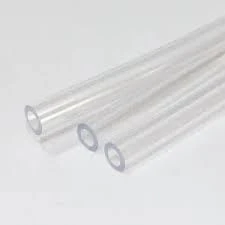Nov . 22, 2024 09:33 Back to list
polyethylene welding rod
The Importance of Polyethylene Welding Rods in Modern Manufacturing
Polyethylene welding rods are vital components in the world of plastics and industrial manufacturing. Used extensively for joining polyethylene materials, these rods offer a reliable solution for creating strong, durable connections in various applications, ranging from industrial fabrication to everyday repairs. Understanding the significance of polyethylene welding rods, their properties, and applications can provide deeper insight into their role in modern manufacturing processes.
What is Polyethylene?
Polyethylene is one of the most widely used thermoplastics in the world, known for its versatility, chemical resistance, and durability. It is essential in producing a vast array of products, including packaging materials, containers, and pipes. The material’s properties make it particularly well-suited for applications in environments that require resilience against chemicals and varying temperatures.
The Role of Welding Rods
Welding rods serve as filler materials used during the welding process to join two pieces of polyethylene. The process typically involves heating the areas to be joined, allowing the polyethylene molecules to intermingle and form a strong bond as they cool. Polyethylene welding rods are manufactured from the same or similar polyethylene material as the items to be joined, ensuring optimal compatibility and strength.
Types of Polyethylene Welding Rods
There are various types of polyethylene welding rods available in the market, tailored to specific applications
1. High-Density Polyethylene (HDPE) Rods Known for their excellent tensile strength and resistance to impact, HDPE rods are widely used in applications where strength is crucial. 2. Low-Density Polyethylene (LDPE) Rods These rods offer more flexibility and are often used in applications that require a degree of elasticity.
3. Medium-Density Polyethylene (MDPE) Rods MDPE rods strike a balance between the flexible and rigid types, making them suitable for a variety of applications.
Benefits of Using Polyethylene Welding Rods
The use of polyethylene welding rods comes with several advantages
polyethylene welding rod

- Durability Welds made with polyethylene rods exhibit strong resistance to stress and external factors, ensuring longevity in various applications.
- Chemical Resistance Polyethylene is highly resistant to chemicals, making welding rods suitable for industries where exposure to corrosive substances is a concern
.- Ease of Use Welding polyethylene using these rods can be a straightforward process. With the right technique and equipment, users can achieve effective and durable joins.
- Cost-Effectiveness The overall cost of production can be reduced when using polyethylene welding rods instead of purchasing completely new components or products.
Applications
The applications of polyethylene welding rods are extensive
- Industrial Manufacturing Polyethylene welding rods are predominantly used in the manufacturing of tanks, pipes, and other components where strong, leak-proof joints are essential.
- Construction In the construction industry, these rods are often utilized for waterproofing applications, as they create durable seals.
- Vehicle Repairs They are also used for repairing plastic components in vehicles and equipment, providing a convenient solution for maintenance and prolonging the life of the parts.
- Art and Crafts Beyond industrial uses, artisans and hobbyists utilize polyethylene welding rods for creative projects and repairs.
Conclusion
Polyethylene welding rods play an indispensable role in modern manufacturing and repair processes. Their durability, versatility, and effectiveness make them a preferred choice in a multitude of industries. As technology continues to advance, the development and application of these rods are likely to become even more sophisticated, enabling further innovations in the use of polyethylene materials. In light of these factors, understanding and utilizing polyethylene welding rods effectively can significantly enhance production capabilities and product longevity across various sectors.
-
High-Quality PPR Pipes and Fittings Durable ERA PPR & PVC PPR Solutions
NewsJul.08,2025
-
Black HDPE Cutting Board - Durable, Non-Porous & Food Safe HDPE Plastic Cutting Board
NewsJul.08,2025
-
High-Quality CPVC Panel Durable HDPE & PVC Panels Supplier
NewsJul.08,2025
-
Double PE Welding Rod Supplier - High Strength, Durable & Versatile Welding Solutions
NewsJul.07,2025
-
High-Quality PVC-O Pipe Supplier Durable 75mm PVC Pipe & Connections Leading PVC Pipe Company
NewsJul.07,2025
-
HDPE Drainage Pipe Supplier – Durable & Corrosion-Resistant Solutions
NewsJul.06,2025

